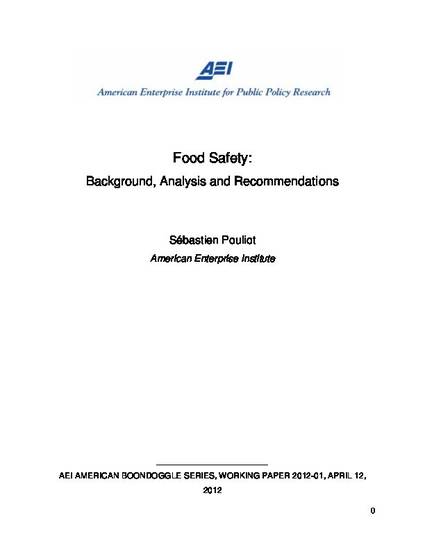
Unpublished Paper
Food Safety: Background, Analysis and Recommendations
AEI Working Papers
(2012)
Abstract
Several food safety incidents have made dramatic headlines over the last six years, including E. coli 0157:H7 in spinach in 2006, Salmonella Saintpaul in peppers in 2008, Salmonella Typhimurium in peanut butter in 2008-09 and Salmonella Enteritidis in eggs in 2010. These high-profile events substantially raised consumer awareness about food safety issues. As a result, many Americans now perceive the US food system as vulnerable and call for reforming US food safety institutions.
The data show that the incidence of food-borne illnesses in the United States is extensive. According to recent estimates by the Center for Disease Control and Prevention (CDC), each year 48 million people become sick, 128,000 are hospitalized and 3,000 die from food-borne illness caused by microbial pathogens (CDC 2011). R. L. Scharff reports that the annual health related cost of food safety is around $103 billion. Notwithstanding the large number of food-borne illness cases and the considerable economic losses from food-borne illness, the US food industry is recognized as one of the safest in the world.
Food safety provisions have not been prominent in previous farm bills, which traditionally focus on programs managed by the United States Department of Agriculture (USDA). Most food safety regulations do not fall under the USDA’s mandate: several other federal agencies have major responsibilities for enforcing food safety regulations. Nonetheless, the Farm Bill, as an omnibus bill, can offer a platform for a reform of US food safety policies.
Disciplines
Publication Date
2012
Comments
Copyright Sebastian Pouliot 2012
Citation Information
Sebastien Pouliot. "Food Safety: Background, Analysis and Recommendations" AEI Working Papers (2012) Available at: http://works.bepress.com/sebastien-pouliot/21/
